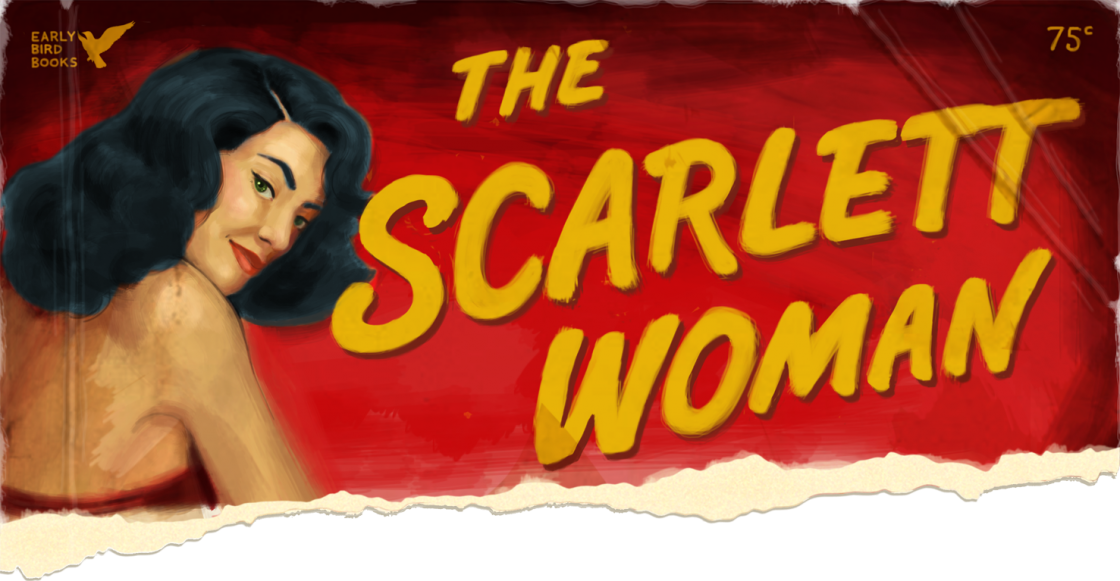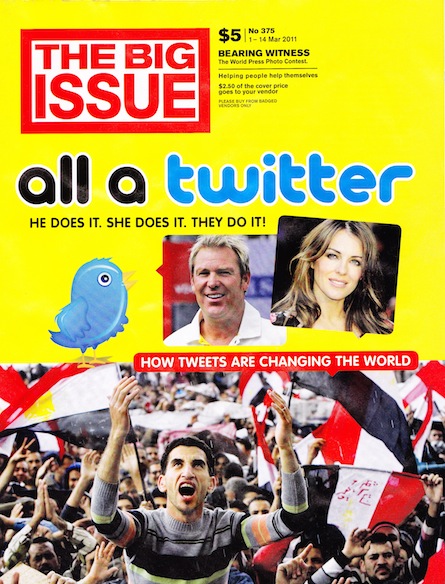
Girl with a Satchel featured an excerpt from a Washington Post column about body snarking at the Oscars:
“I would like to note that more space was devoted to photographs of ladies wearing dresses… than for the last two weeks’ coverage of the events in Libya.”
This is also true of the news coverage in Vietnam, where a colleague of mine (whom I mentioned as the friendly workplace Big Issue provider earlier this week) is spending five weeks. In a recent email, he said that the hot topic on the news there is Charlie Sheen, not Libya, Egypt or Japan, which bore the brunt of a 7.3 magnitude earthquake yesterday afternoon.
A story on MamaMia written by publicist Steven Murphy echoes this:
“His weakness for drugs and alcohol is… well documented and he has been fodder for the tabloid press for years.
“But this latest incident is front-page news like no other. But why? Why is this incident haunting our news services day and night?”
The article somewhat-annoyingly glossed over the fact that his drug and alcohol problems are put at the forefront of his negative publicity, when his hatred of women and obvious mental illness are shoved to the back.
Jezebel hasn’t forgotten, however, with a no-bullshit article entitled “Charlie Sheen’s History of Violence Toward Women” published last week. The article also dealt with John Galliano’s disgraceful display of anti-Semitism, and what the news stories don’t tell you:
“Galliano allegedly grabbed gallery curator Geraldine Bloch by the hair and said, ‘Shut your mouth, dirty bitch, I can’t stand your dirty whore voice.’”
I, myself, didn’t even know that happened until I read the article, and I usually take a vested interest in these sorts of things.
On the plus side, Galliano has been fired as head designer of Christian Dior and—finally!—Sheen’s been fired as head douchebag on Two & a Half Men, to be replaced, allegedly, by reformed bad boy and fellow brat pack member, Rob Lowe.
While I couldn’t be happier about the latter (let’s shout it from the rooftops!), Galliano’s reign at Dior produced some of the finest garments the fashion world has seen, and it’s unfortunate it had to come to this.
But I applaud the fashion house for ousting the anti-Semite, and stars like Natalie Portman, who have publicly spoken out against him.
Both men’s firings show that there is a zero tolerance policy against these kinds of abhorrent behaviours, and hopefully other companies, in the entertainment industry and otherwise, will follow suit.
Although Michael Specter of The New Yorker doesn’t think so, writing that:
“the fashion world has a remarkable ability to shrug off the odd deeply flawed human being, as long as he or she can cut a dress like Galliano can or wear one like Kate Moss, who, despite behaviour that sets a disastrous example for millions of girls, including issues with drugs, is forgiven because, well, she is really very pretty.”
I haven’t always been innocent in providing double standards to those I like, think are talented, and should be forgiven for their indiscretions.
Just yesterday, some co-workers and I were talking about Catherine Deveny’s tweets at last year’s Logies. Personally, I didn’t find them to be offensive, and sorely miss her column on the back page of The Saturday Age’s Life & Style (formerly the A2). But, looking back on it, The Age did the right thing by sacking her. At the time, both Deveny and I used the excuse that she’s a comedienne; that’s her job. I guess it takes the disgraces of people you don’t like to understand the repercussions of (the disgraces of) those you do.
Once such repugnant crime committed by professional wrestler Chris Benoit in 2007, when he murdered his wife and son and killed himself, gave me lots to think (and write) about. On the one hand, I felt his legacy as one of the best professional wrestlers ever to grace the squared circle shouldn’t be forgotten, however, Benoit took three lives and sullied the reputation of professional wrestling (okay, there wasn’t much of a reputation left to sully!) and sparked a debate on steroids and drug testing that raged for years; the smoke of which still lingers today.
I’ve written several articles on that story and, with a new frame of mind to cast a different light on the story, I think I may just revisit said articles. (The anniversary of the double-murder suicide is June 24, so watch this space around that time.)
Benoit was obviously seriously mentally ill; the (not-so-) funny thing is, his friends, family and co-workers never picked up on it.
Charlie Sheen, however, has a long history of violence and drug use, and there’s no telling what he’s capable of.
Related: The Big Issue Review, 1-14 March 2011.
The Anatomy of a Douchebag.
Guilty Until Proven Innocent: Charlie Sheen’s Witness.
Why Are Famous Men Forgiven for Their Wrongdoings, While Women Are Vilified for Much Less?
Elsewhere: [MamaMia] Advice to Charlie Sheen from Australia’s Top Publicist.
[Jezebel] Charlie Sheen’s History of Violence Toward Women.
[The New Yorker] John Galliano’s Implosion.
[Girl with a Satchel] Body Snarking is So No Funny But Jacki Weaver is Fab.
Images via NY Daily News, The Gloss, Pop Culture Madness.






